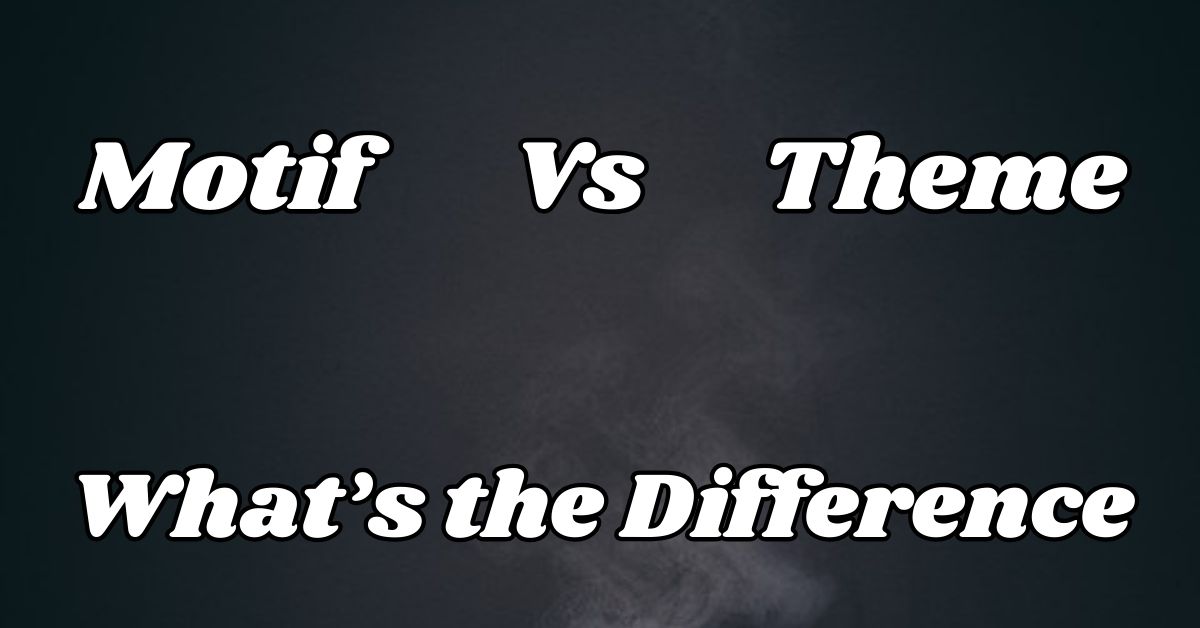Motif vs Theme is a fundamental distinction in literature that every reader should understand. While both concepts play significant roles in storytelling, they serve different purposes. A motif is a recurring element that appears throughout a work, often symbolizing deeper meanings and enhancing the narrative.
In contrast, a theme represents the central idea or message that emerges from the story, reflecting broader concepts about human experience and society.
By grasping the differences between these two literary devices, readers can engage more deeply with texts, uncovering the layers of meaning that enrich characters, plots, and ultimately, the overall storytelling experience. Understanding this distinction can transform your reading journey.
Quick Summary
Motif can be thought of as a repeated image, symbol, or idea that reinforces the story’s message. For example, in a novel about love, the motif might be flowers, which symbolize beauty and transience.
On the other hand, a theme is more abstract and represents the broader universal truths or lessons that the story conveys. In the same novel, the theme might explore love’s complexities and challenges.
Difference Between Motif vs Theme?
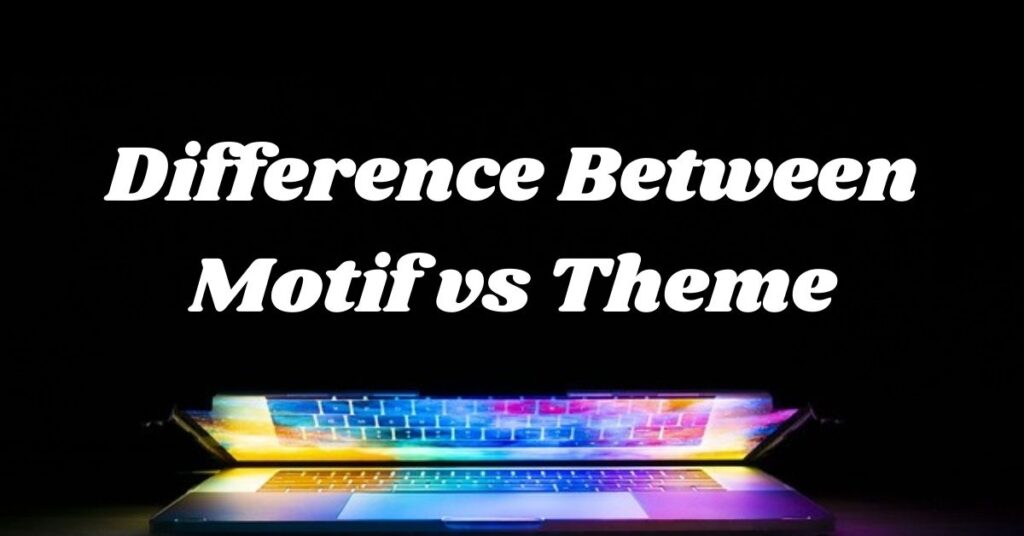
A motif is often a tangible element something you can see or hear like a specific color, object, or phrase that recurs throughout the narrative. For instance, in Shakespeare’s “Macbeth,” blood serves as a powerful symbolic motif, representing guilt and ambition.
Conversely, a theme is an abstract concept that reflects deeper meanings within the story. Themes can include ideas like redemption, betrayal, or the struggle for power.
Understanding this distinction helps readers engage with literature on a deeper level. While motifs enhance the narrative by adding layers of meaning and emotional depth, themes provide insight into human nature and societal issues.
Key Differentiators
When comparing motif and theme, several key differences emerge. Motifs are concrete elements that often serve to enhance character development or plot progression. They create emotional resonance, helping readers connect with characters on a personal level. For example, a recurring symbol like a family heirloom can highlight themes of heritage and identity.
On the other hand, themes are more abstract and provoke thought about life lessons or moral dilemmas. They encourage readers to reflect on their own experiences and beliefs, often addressing universal truths about human nature.
Here’s a table summarizing the key differences between motifs and themes:
| Aspect | Motif | Theme |
| Definition | A recurring element in a story | The central idea or message of a story |
| Nature | Concrete and tangible | Abstract and conceptual |
| Purpose | Enhances character development and plot | Provokes thought and reflection |
| Emotional Impact | Creates emotional resonance | Encourages introspection |
| Examples | Symbols, images, phrases | Love, betrayal, identity |
| Reader Engagement | Connects readers to characters | Invites readers to explore broader ideas |
Origins of the Motif
Motif originates from the French word meaning “pattern” and has been used since 1848 to describe a recurring element in literature. Derived from the Medieval Latin motivus, meaning “moving,” motifs encompass repeated patterns of language, images, or symbols that enhance a narrative’s themes.
They serve to connect various aspects of a story, providing deeper meaning and emotional resonance while guiding readers toward the central ideas the author wishes to convey.
Origins of the Theme
Theme has its roots in the early 14th century, derived from the Old French tesme and Latin thema, meaning “subject” or “proposition.” It signifies a central idea or topic explored in literature, often reflecting broader concepts about life.
The Greek origin implies something “set down,” indicating a foundational idea within a narrative. Themes can encompass various subjects, including love, power, and identity, and are essential for conveying the author’s message throughout a literary work.
Motif: Definition and Usage
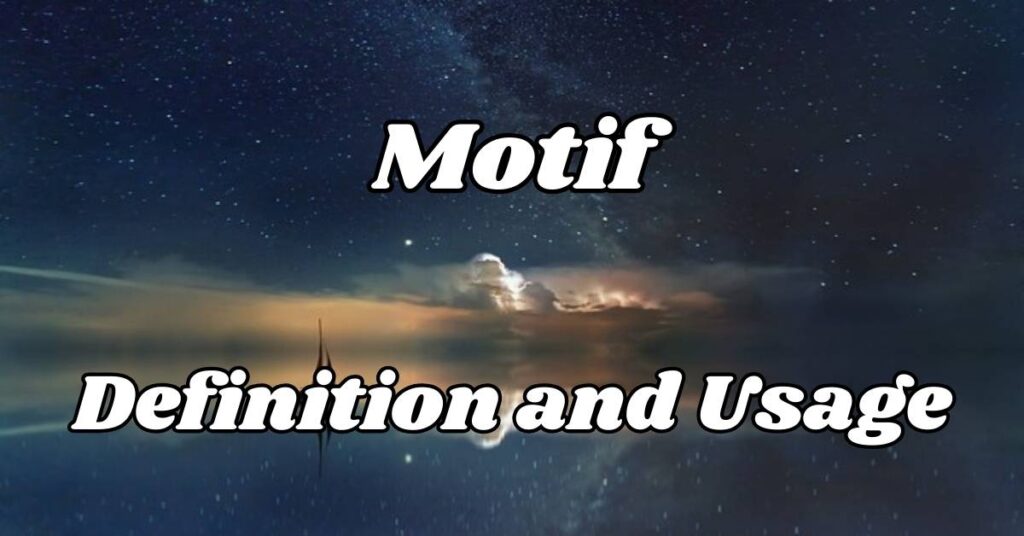
A motif is a recurring element in literature that holds symbolic significance. This can include images, phrases, or themes that appear multiple times throughout a story.
Motifs enhance the narrative by reinforcing themes, deepening character development, and creating emotional connections. They serve as tools for authors to convey deeper meanings and enrich the reader’s experience.
Define Motif
A motif is a recurring element in a story that carries symbolic meaning. It can manifest as an object, phrase, or idea, appearing multiple times throughout the narrative to enhance themes and deepen the reader’s understanding of the text.
Types of Motif
Here are some types of Motif:
Nature
Nature motifs often symbolize growth or change, reflecting the characters’ journeys and transformations throughout the story.
Light vs. Dark
The light vs. dark motif represents the struggle between knowledge and ignorance, often highlighting moral dilemmas faced by characters.
Water
Water motifs symbolize life or purification, illustrating themes of renewal, cleansing, and emotional depth in the narrative.
Seasons
Seasonal motifs reflect change or cycles, representing the passage of time and the characters’ emotional states throughout different phases of their lives.
Animals
Animal motifs represent specific traits or characteristics, often embodying qualities like loyalty, freedom, or cunning that relate to the story’s themes.
Colors
Colors convey emotions; for example, red often symbolizes passion or anger, while blue might represent calmness or sadness, enhancing the emotional landscape of the narrative.
Objects
Objects like mirrors can symbolize reflection and self-discovery, serving as tangible representations of characters’ internal struggles and growth.
Music
Music motifs evoke specific emotions or memories, enriching scenes by connecting characters’ experiences to broader emotional themes.
Dreams
Dream motifs often represent desires or fears, allowing characters to confront their subconscious thoughts and aspirations within the narrative.
Repetition of Phrases
The repetition of phrases emphasizes key ideas and themes, reinforcing important messages and creating a rhythmic quality that resonates with readers.
Uses of Motif
Motifs serve various purposes in literature:
- They reinforce themes by providing concrete examples.
- They enhance character development by reflecting internal struggles.
- They create emotional depth by connecting readers to characters’ experiences.
- They establish patterns that guide readers through the narrative.
- They contribute to world-building by enriching the story’s setting.
Synonyms of Motif
Some synonyms for motif include,
- Theme
- Symbol
- Pattern
- Design
- Idea
- Concept
- Element
- Feature
- Image
- Topic
Theme: Definition and Usage
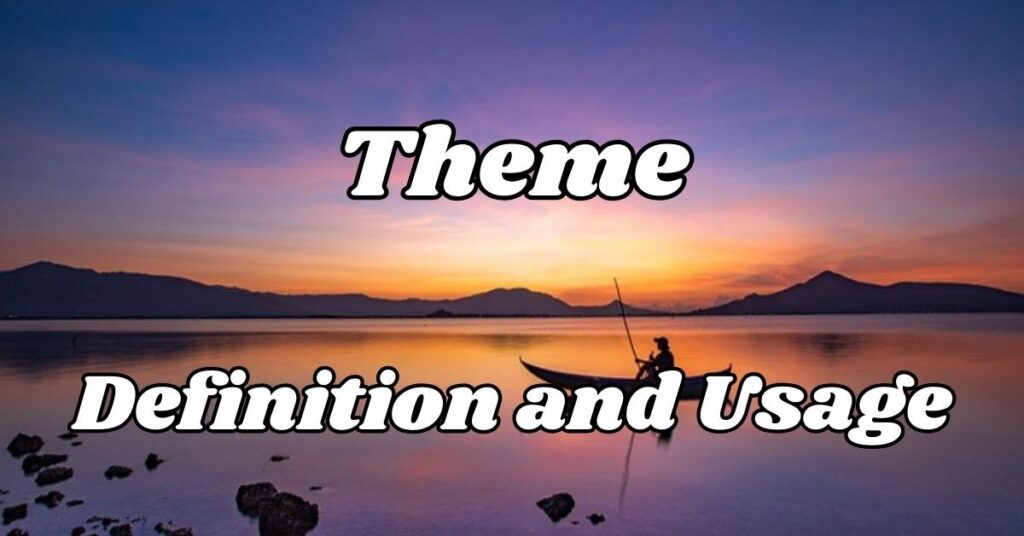
Theme is the central idea or underlying message in a literary work. It reflects the author’s insights about life, society, or human nature. Themes can be explicit or subtle, often explored through characters, plot developments, and motifs.
By examining themes, readers gain a deeper understanding of the narrative’s significance and the universal truths it conveys.
Define Theme
Theme is an overarching idea or message that arises from a literary work. It encapsulates broader concepts about life, society, and human experience, providing insight into the characters’ journeys and the moral or philosophical questions posed by the narrative.
Types of Theme
Love
The theme of love explores romantic relationships and connections, delving into the complexities of affection, desire, and emotional bonds between characters.
Betrayal
Betrayal examines trust issues between characters, highlighting the consequences of deceit and the impact on relationships and personal integrity.
Identity
The identity theme focuses on self-discovery and personal growth, illustrating characters’ journeys to understand who they are and their place in the world.
Power
Power analyzes control dynamics within relationships, exploring how authority influences interactions and the moral implications of wielding power over others.
Freedom
The freedom theme investigates societal constraints versus individual desires, questioning how external forces shape personal choices and the quest for autonomy.
Morality
Morality questions right versus wrong in human behavior, prompting readers to consider ethical dilemmas and the consequences of characters’ actions.
Friendship
Friendship highlights loyalty and companionship, showcasing the importance of supportive relationships in overcoming challenges and navigating life’s complexities.
Loss
The theme of loss deals with grief and its impact on individuals, exploring how characters cope with absence and the emotional journey that follows.
Courage
Courage explores bravery in facing challenges, illustrating how characters confront fears and obstacles to achieve personal growth or protect others.
Change
The change theme reflects on transformation over time, emphasizing how experiences shape characters’ identities and perspectives throughout their journeys..
Uses of Theme
Themes are vital for several reasons:
- They provoke thought about important social issues.
- They encourage readers to reflect on their own lives.
- They provide insight into human behavior and psychology.
- They enhance character arcs by revealing motivations.
- They create unity within the narrative by tying elements together.
Synonyms of Theme
Synonyms for theme include:
- Subject
- Topic
- Main idea
- Central idea
- Message
- Thesis
- Motif (in some contexts)
- Focus
- Concept
- Principle
Side by Side Comparison
| Aspect | Motif | Theme |
| Definition | Recurring element | Central idea or message |
| Nature | Concrete | Abstract |
| Purpose | Enhances narrative | Conveys deeper meaning |
Everyday Usage Examples
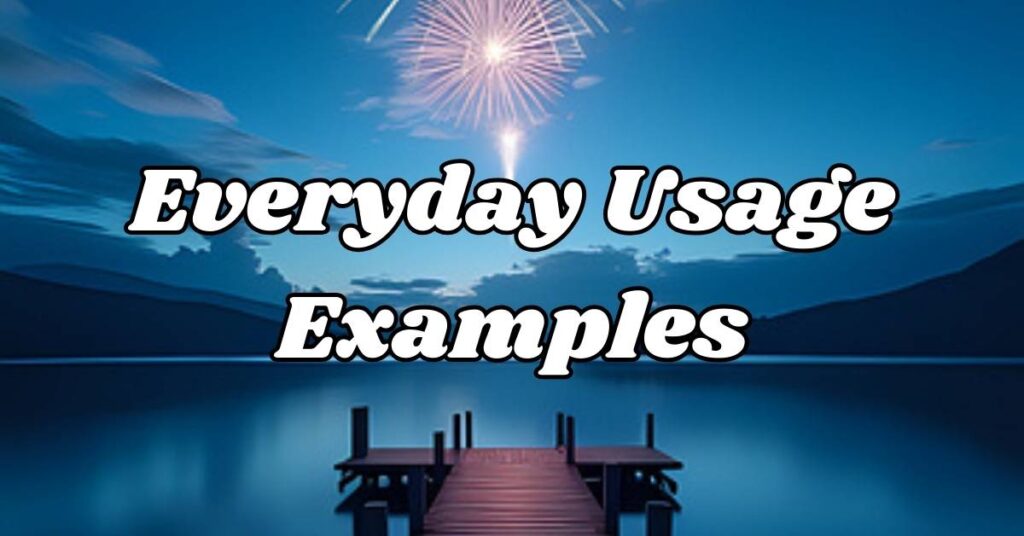
We encounter motifs and themes regularly without realizing it. For instance, many movies use the motif of “the hero’s journey,” where characters face trials before achieving their goals, a common theme of personal growth or transformation.
Related Article: Interested In or On: Master These Confusing Words in Minutes
Motif Examples
Here are the examples to ensure clarity:
- In F. Scott Fitzgerald’s “The Great Gatsby,” the green light at the end of Daisy’s dock represents Gatsby’s unreachable dreams, appearing throughout the story as he strives for something just out of reach.
- In J.D. Salinger’s “The Catcher in the Rye,” Holden Caulfield often refers to “phoniness,” which underscores his criticism of adult society and reveals his struggles with growing up.
- In “To Kill a Mockingbird,” mockingbirds symbolize innocence, reappearing as characters navigate the moral challenges of racism and injustice.
- Shakespeare’s “Romeo and Juliet” employs light and dark motifs to contrast the beauty of love with its tragic outcomes.
- In George Orwell’s “1984,” Big Brother acts as a recurring motif that signifies oppressive surveillance and critiques totalitarian regimes.
- In Hemingway’s “The Old Man and The Sea,” water symbolizes the struggles of life against nature’s challenges.
- In “Moby Dick,” the white whale serves as both a literal creature and a metaphor for obsession, reflecting Captain Ahab’s inner turmoil.
Examples of Motif in Literature
- Literature is rich with motifs that enhance storytelling through symbolism and emotional depth; examples include:
- The use of water in “The Old Man and The Sea” symbolizes life’s struggles against nature’s forces.
- In “Moby Dick,” the white whale serves as both a literal creature and a metaphor for obsession.
Theme Examples
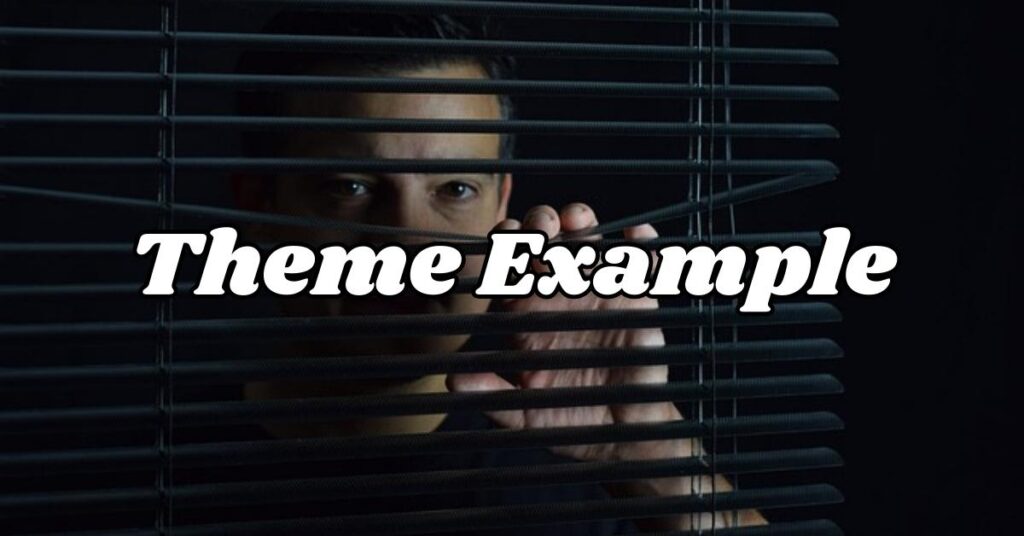
- In “Pride and Prejudice,” social class is a prominent theme that examines how class distinctions influence relationships, particularly between Elizabeth Bennet and Mr. Darcy.
- Cormac McCarthy’s “The Road” centers on the theme of survival, exploring humanity’s resilience in a bleak, post-apocalyptic world through the journey of its protagonists.
- Paulo Coelho’s “The Alchemist” delves into themes of destiny, emphasizing the importance of pursuing one’s dreams despite the obstacles faced along the way.
- In “The Handmaid’s Tale,” Margaret Atwood explores power dynamics, critiquing gender roles in society through Offred’s experiences under an oppressive regime.
- “The Kite Runner” addresses themes of redemption, illustrating Amir’s quest to atone for past mistakes and the vital role forgiveness plays in healing relationships.
Examples of Theme in Literature
Notable works like “1984” explore themes surrounding surveillance and freedom while highlighting societal issues relevant today; similarly, “The Grapes of Wrath” tackles themes related to economic hardship during the Great Depression era both reflecting universal truths about humanity’s struggles against adversity.
Read More Article: Fairing vs Faring: What’s the Difference?
FAQS: Motif vs Theme
Is color a theme or motif?
Color can be both; it acts as a motif when it recurs to symbolize deeper meanings and can represent broader themes depending on its context in the story.
Is love a theme or motif?
Love is mainly a theme, reflecting central ideas about relationships and emotions, but it can also appear as a motif through recurring symbols related to love.
What are the 7 motifs?
Seven common motifs include nature, light versus dark, water, seasons, animals, colors, and repeated phrases, all of which enhance themes and character arcs in literature.
What are common motifs?
Common motifs are recurring symbols or ideas in literature, such as journeys, mirrors, dreams, and family dynamics, which reinforce the central themes of a narrative.
Conclusion
Understanding the differences between motif vs theme enriches our appreciation of literature. While motifs serve as recurring elements that enhance the narrative and deepen character connections, themes provide the overarching messages that reflect broader human experiences.
Both literary devices play crucial roles in storytelling, inviting readers to engage with texts on multiple levels. By recognizing how motifs and themes interact, we can uncover the layers of meaning within a story, ultimately leading to a more fulfilling reading experience

